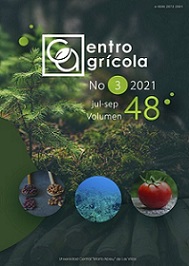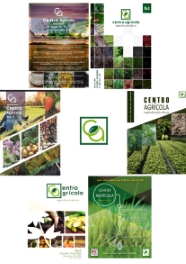CE: 1843 CF: cag051192209
ARTÍCULO DE INVESTIGACIÓN
Biological effectiveness of Singular 350 SC for control of Melanaphis sacchari in Sorghum bicolor
Efectividad biológica de Singular 350 SC para el control de Melanaphis sacchari en Sorghum bicolor
Daniel Perales-Rosas1, Maykel Hernández-Aro1*, Mairel Valle-de la Paz2, Agustín Peralta-Fernando3
1 Laboratorio de Agrodiagnóstico Fitolab, S.A. de C.V., Calle Bugambilia No.9, Col. El Mirador de Puxtla, Cuautla, Morelos, CP 62758
2 Universidad Autónoma de Guerrero, Escuela Superior de Ciencias Naturales, Ex Rancho el Shalako, Carr. Nal. Chilpancingo - Petaquillas, México, CP 39105
3 Química Lucava S.A. de C.V. Carretera Panamericana km. 284, Col. 2da. Fracción de Crespo, Celaya, Guanajuato, México, CP 38110
*Autor para correspondencia: This email address is being protected from spambots. You need JavaScript enabled to view it.; This email address is being protected from spambots. You need JavaScript enabled to view it.
ABSTRACT
A study was conducted in the State of San Luis Potosí, Mexico, to evaluate the biological effectiveness of the insecticide Singular 350 SC (Imidacloprid) for control of sugarcane aphid (Melanaphis sacchari Zehntner) in the sorghum crop (Sorghum bicolor (L.) Moench) Variety: Nikel. A randomized complete block design was implemented, with five treatments and four repetitions; evaluating three doses of Singular 350 SC, a regional control consist in 300 mL ha-1 of Confidor 350 SC and an absolute witness, without insecticides. Two applications were made with a motorized sprayer backpack coupled with two full cone nozzles, being calibrated to apply a total volume of 391 L ha-1. The number of colonies, the yellow aphid infestation and the Abbott efficacy were evaluated at four times. The three doses of Singular 350 SC showed good efficiencies in the control of the number of live colonies and infestation of yellow aphid in sorghum, being greater than 85 % from the first and second evaluation date respectively. The treatments of Singular 350 SC at doses of 250 and 300 mL ha-1 were outstanding, with efficiency percentages higher than 85 % from the first evaluation.






